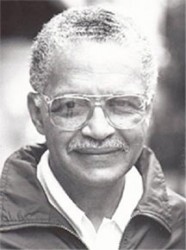A nation’s art, its literature, music, theatre and dance traditions all arise from, are influenced and shaped by its culture. These include mythology, folklore and folk tales, and spiritual beliefs which are all factors of culture – how people live, cope with and relate to their environment. To a large extent artists are individuals who rule their own destinies, driven by the imagination and whatever influences or inspires them from within or without their national borders. But such theorists as Marx, Lenin, Trotsky and Frederic Jameson do have a point in their assertions that the political (structural) base determines the (cultural) superstructure as well as the mind and spirit of the artists, often unknown to their conscious thoughts.
One sector in Guyana’s economic life, and in the economic history of British Guiana has thus been an important contributor to the nation’s cultural life, its character, its traditions and its art. That is the mining sector, but to be more specific, the contribution has come from the real pioneers of gold and diamond mining who began to brave the interior in excess of a century and a quarter ago – small individual prospectors who came to be called pork-knockers (porkknockers or pork knockers). A very significant recent work which outlines their history and covers all the cultural factors that evolved out of their activities is the well-researched and very informative comic book An Illustrated History of the Pork Knockers by Barrington Braithwaite (2010) published with assistance from the Guyana Geology and Mines Commission.
Apart from past GGMC Commission-ers Robeson Benn and William Woolford, Braithwaite acknowledges the work of Hazel Simpson, Roderick Harry and Audreyanna Thomas in the production of the book. He very much covers almost every aspect of the trade, the tradition, the men, the culture and the lore. That work was treated in ‘Arts On Sunday’ in Sunday Stabroek (Sept. 19, 2010). The attempt here is to review the factor of the porkknockers in the national culture, literature and the arts.
![]() Of course the ancient and eternal search for gold in the Guianas has its origins in the arrival of Europeans for whom it became a motive and driving force – perhaps an obsession (some say a curse). Very much in the forefront of this was England’s Sir Walter Ralegh who actively led a quest for El Dorado (the golden one) who ruled Manoa, the city of gold on Lake Parime, supposedly well hidden in Guyana’s interior (in the Rupununi). Lake Parime was shown on maps of Guyana well into the eighteenth century, but what stands out is the indelible impression that the El Dorado story made on the nation’s literature, continuing to inspire writers to the present day. Added to that are the legends and mythology it has generated following Ralegh’s lavishly written accounts.
Of course the ancient and eternal search for gold in the Guianas has its origins in the arrival of Europeans for whom it became a motive and driving force – perhaps an obsession (some say a curse). Very much in the forefront of this was England’s Sir Walter Ralegh who actively led a quest for El Dorado (the golden one) who ruled Manoa, the city of gold on Lake Parime, supposedly well hidden in Guyana’s interior (in the Rupununi). Lake Parime was shown on maps of Guyana well into the eighteenth century, but what stands out is the indelible impression that the El Dorado story made on the nation’s literature, continuing to inspire writers to the present day. Added to that are the legends and mythology it has generated following Ralegh’s lavishly written accounts.
But the small pioneering prospectors of more recent history have made their own mark on the very same literature. The Marxist-Leninist, Trotskyite theories continued by Jameson earn increased credibility here when one examines how this economic activity rose to be such an effective factor in the culture. This process, both unconscious and conscious, involved the evolution of a spirit, a way of life, a mindset, beliefs, myth, folklore, legend, folk songs, folk tales and jokes. Out of these came songs, poems, plays, short stories and novels.

In existence today in Guyana’s contemporary art are paintings by one of the leading artists, Ron Savory, who captures aspects of the interior landscape. The collection includes a work in oil on canvas simply titled ‘Kamarang’ in which there is a ramshackle abode in the jungle with an empty white female form, as provocative as she is almost ghostly, standing nearby. It suggests the porkknocker existence in an interior location with hired female company, representative of a common theme concerning that life and world. The painting suggests many things that became attached to the industry, including prostitution. The name Kamarang is famously associated with the trade, being one of the most fabled locations for gold hunting.

Kamarang is also immortalised in song. One of the many written to celebrate both the landscape and the culture of gold-seeking describes in music the river, the rapids and waterfalls with “Oh Kamarang, swift flowing Kamarang.” There are many others such as ‘Going up the Potaro, going to look for gold . . . O Lord I’m tired and cold,’ the Potaro being another of the fabled rivers. There is also mention of this as a national tradition in ‘Oh Guyana, beautiful Guyana.’ Such songs are all romantic, pastoral, celebratory and tragic as they document gold-hunting in sometimes nationalistic fashion to define national identity.
Those are lyrics consciously composed by writers to add to descriptions of their country. But the oral literature also includes others whose authorship is ascribed to the folk community collectively. They are traditional, not done by any one known writer, but arose out of the consciousness of the folk and vividly record their life and culture. These are folk songs that reinforce tradition, belief and the culture that has evolved from porkknocking. The song ‘Itanami’ captures many corners of this. The persona takes his audience through the prevalent practice of boat journeys upon dangerous waters – the rapids that can kill. He fears the threat offered by the river while describing routines of the riverain existence.
Yet another traditional folk song approaches the life from an entirely different viewpoint. It is set on the coast and the persona is upbraiding his neighbour whose sudden friendly greeting is insincere and probably only being offered because he wants help. “Mahnin neighba, mahnin,” comes from next door, but the “neighbour” replies “When yu bin a Kurupung, yu nah bin tell me mahnin/ Now because yu money done yu hustle fe tell me mahnin / Mahnin neighba, mahnin… Me no want yu conniving ‘mahnin.’” This is a neat dramatisation of one of the notorious cultural traits of the porkknocker. Obviously the neighbour, like so many others, went into Kurupung (another famous gold site) to seek his fortune, found it and returned home. But characteristically, the porkknocker who struck it rich, squanders the money and quickly returns to poverty. He forgets family, friends and neighbours in his ostentatious spending, but soon finds himself needing their help.
Apart from the oral literature, there is a whole corpus of fiction treating similar themes. Another folk song ‘Makantali’ tells the tragic tale of “Makantali money done in de country, / Makantali money done O,” talking about one of those legendary characters. Jan Carew takes that up in fiction with his novel Black Midas about another legend called Ocean Shark. When they struck gold these men joined the nouveau riche, felt they had money to burn and literally did that. Carew’s novel is tragic in his fictionalising of what is said to be true events. Deryck Bernard’s short story has a different approach, though with an equal tragic sense. Going Home focuses on the severe hardships and loneliness of long periods “in the bush” seeking fortune with the real threat of never making it back home.
The Makantali folk song also inspired drama. The story is adapted by playwright Harold Bascom whose Makantali won the Guyana Prize 1996. But Bascom takes it a bit higher as he first dramatises the same notorious characteristic of the weak prospector who cannot help himself against the many hazards and temptations. He then presents two versions of the Makantali story – the tragic one repeated in every rum shop, and counteracts it with a tale of generosity, newly gained strength and wisdom, reformation of character and catharsis. The spirit of Makantali is able, not only to help a typical porkknocker venturing out to make a huge rich find, but also helps him to spurn the destructive influences and temptations, the siren calls of predatory “bush whores” and return to the coast with his money to his formerly abandoned family. Bascom makes innovative, creative use of the stimulus.
Long before Bascom, another dramatist Sheik Sadeek was a pioneer of sorts. In the 1960s he pushed forward the practice of writing on local life among peasants and working people. Among his plays were treatments of rural rice farming peasants, sugar estate Indian labourers, and a play called Porkknockers. The subject is therefore well represented among the leading writers in the formal literature as much as it is in the oral literature.
There are many categories of folk tales in Guyanese oral literature, including some in a category known as porkknockers stories or porkknockers tales. These are not stories about porkknockers, but tales believed to have originated among them or told by them. They are on a variety of subjects, sometimes jocular, or sometimes about something amazing, or that challenges belief. There are also spiritual beliefs, supernatural creatures and ‘jumbie stories’ related to the interior environment, forests and rivers, the habitat of the gold hunters. Some of these are associated with the massacuraman – a monster of the river, stories which are often attributed to porkknocker tales. However, lines are blurred and while the physical features of the massacuraman are African, there is still speculation about whether tales of his presence might not be Amerindian. A search of the literature on Amerindian lore, myths and beliefs including Roth, Brown and im Thurn did not provide much evidence.
One very interesting folk practice which has never been linked to Guyanese porkknockers, has its origins, however, among goldfield workers of the early and middle twentieth century. Generations of St Lucians engaged in this occupation settled in Mahdia and imported the La Rose tradition from St Lucia into that community. This, along with the French Creole Patois and other St Lucian cultural elements took root in Mahdia. It was only recently that there were reports about factors contributing to the decline of the La Rose there.
Well beyond that, however, has been a hundred years of experience which has been more than enough to create a tradition and a culture belonging to the life and activities of the porkknockers. Their presence has created a strong sub-culture in the Guyanese national identity and has been responsible for mythology, folklore, legends, spiritual beliefs, folk songs, music, drama and literature. Even beyond these are the industry, the history, the people, the extensions of these on the life of the coastland and the capital, as well as the heroes and heroism, the roguery, excesses and the grotesque, which are parts of the larger than life cosmos of people who braved frontiers in Guyanese nationhood.










